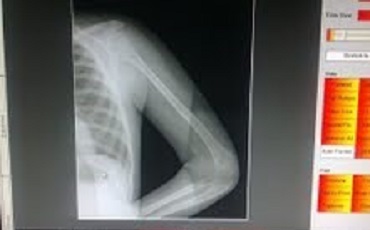98217 33877
info.secretarymus@gmail.com27 Jun 2018
Pearls musculoskeletal usg

Sonongraphy is beginning to play an increasing important role in MSK USG.
Advantages of USG over other modalities are commonly known to all.
Disadvantages however are: operator dependence, often incomprehensible documentation, and inability to penetrate osseous structures.
- 1. A retracted tendon is easily detected ultrasonogarphically by comparison with the contra-lateral side. A tendon with degenerative changes is more difficult to evaluate. In general, normal tendon is hypoechoic.
- 2. Sonongraphy is well suited to diagnose ligamentous injuries. While normal ligaments are seen as echogenic structures, injuries at the ligamentous insertion and involving the ligament itself are not only seen as continuity breaks but also as diffuse thickening and decreased echogencity.
- 3. A haematoma is sonographically detected as a hypoechoic or sometimes anechoic fluid accumulation. The musculature also loses its normal pinnate texture. Often the haematoma cannot reliably be differentiated from synovial fluid extruded from a ruptured Bakers’ cyst in the calf.
- 4. Sonongraphy can distinguish between soft tissue swelling and clavicular dislocation.
- 5. Examining both shoulders makes it easier to evaluate the rotator cuff. The following signs have been found to be reliable evidence of a rotator cuff tear.
Focal interruption of rotator cuff.
Loss of the rotator cuff.
Focal thinning of the rotator cuff.
Small hypoechoic band replacing the normal structure.
- 6. Echogenic foci are by far less informative and have a positive predictive value of 50% or lower by USG screening. Such foci can be caused by zones of degeneration and calcification, as well as the intra-articular segments of the long biceps tendon.
A rotator cuff defect can remain undetected sonographically if it is partially or complete filled with granulation tissue, debris-containing fluid and tendon remnants, Likewise, superimposed osseous structures ( in particular, the acromion and acromioclavicular joint) can interfere with sonographic visualization of all components of the rotator cuff. - 7. If correctly performed and judiciously interpreted, sonography can provide clinically relevant information, especially in differentiating an intact rotator cuff from a complete tear and diagnosing pathologic changes of the subacromial/subdeltoid bursa and biceps tendon (particularly tears and subluxations). Moreover, calcific tendinitis can be sonographically detected.
- 8. Sonography does not play a major role in evaluating shoulder instability, though it can confirm any clinical instability if the humeral head is moved with one hand and the probe is held in the other hand. Sonography can also show the Hills-Sachs lesion.
- 9. Sonography might delineate concomitant injuries, such as tears of the rotator cuff or long head of the biceps tendon, or a joint effusion in cases of polytrauma.
- 10. USG in Children: Sonography might be helpful to identify free intra-articular bodies (flexion side) and to evaluate injuries in children (radial head dislocation?). The ossification centers can be seen sonographically before they are detected by radiographs, for suspected vascular injuries color-coded Doppler sonography is indicated.
- 11. Occult Green stick fractures : USG is especially useful in the pediatric age groups. Step deformities of the cortex can be diagnosed with high –frequency probes.
- 12. Sonography and MRI can diagnose injuries of the ulnar collateral ligament of the thumb and distinguish between Undisplaced and displaced ruptures, but neither technique has been advocated for routine clinical use at this time.
- 13. The accuracy and dependability of sonography in distinguishing avulsions of ligamentous insertion from osteochondral fractures are improving. Furthermore, sonography can directly visualize injuries of the collateral ligaments and effusion of the inter-phalangeal joint in selected cases. Performing sonography as a dynamic examination also helps to differentiate complete form incomplete ligamentous tears.
- 14. Post-surgical seromas, hematomas, and abscesses can be identified sonographically and aspirated under sonographic guidance.
- 15. The hematoma found with acutely injured ligaments precludes adequate sonographic evaluation of acute trauma. Sonography, therefore, does not play any role in the acute setting.
- 16. Identifying the ossification center within the epiphyseal cartilage in the neonatal age group and demonstrating its relationship to the already-ossified metaphysis allows the sonographic differentiation of a normal finding from a traumatic epiphyseal dislocation and joint effusion. If subchondral fracture, osteochondritis dissecans, or avascular osteonecrosis is suspected in infants and children, the sonographically demonstrated joint effusion should prompt a more extensive diagnostic evaluation. Failure to find a joint effusion sonographically makes acute trauma unlikely.
- 17. "Early detection of OM": :The acoustic properties of the neonatal anatomy are especially suitable for sonography. The first sonographic sign, seen even before any periosteal reaction, is deep soft-tissue edema and swelling. This is followed by sonographic detection of a thin hypoechoic fluid layer, which elevates the Periosteum and may progress to a space occupying abscess if the infection is not adequately treated.
- 18. In an older child and adult, sonography is an examination that supplements the evaluation of the soft tissues adjacent to bone. Soft tissue abscesses, sub-periostal abscesses, cysts, and hematomas are excellently demonstrated on ultrasound as hypoechoic or anechoic lesions and as such are suitable for sonographically guided aspiration. Any associated cortical destruction may also be shown if the sonographic conditions are optimal (tissue harmonics). Diffuse soft-tissue infection and abscess can confidently be differentiated by sonography. Any diffuse soft-tissue swelling is characterized by echogenic thickening of the subcutaneous tissue.
